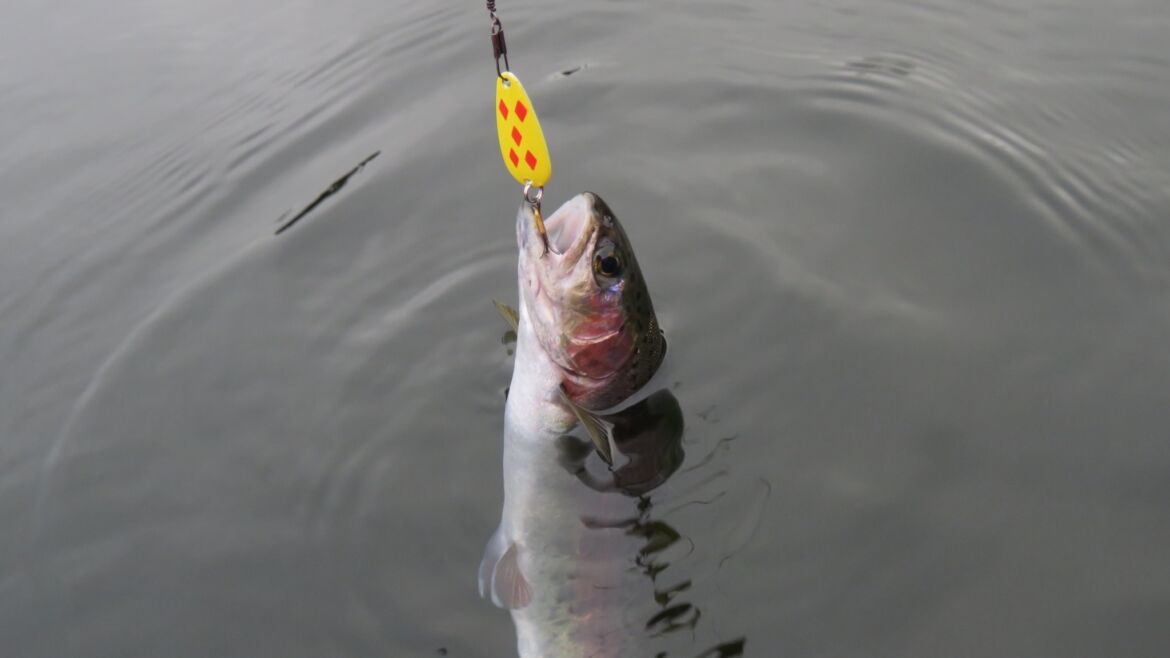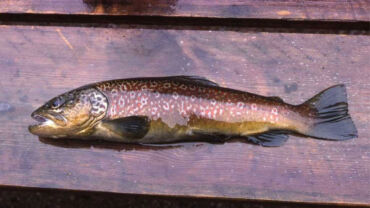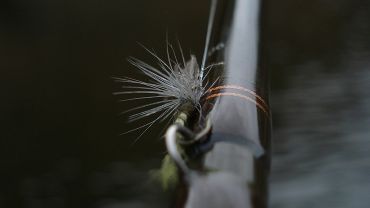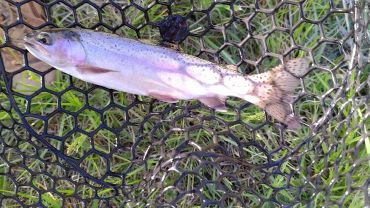Globally, Trout are possibly one of the most commonly caught freshwater fish in the world. In the United States and Canada, behind panfish and Bass, Trout is possibly one of the most targeted freshwater fish species in North America.
Trout frequently delivers a hard fight, especially on light lines and fly-fishing equipment, is abundant throughout streams, rivers, lakes, dams, and reservoirs, and through stocking and natural reproduction, enjoys a healthy and stable population. And let’s be honest when cared for and prepared properly, they taste pretty delicious, too.
The four main species of Trout in North America are Rainbow, Brown, Cutthroat, and Brook. Then you have several other subspecies, such as Lake Trout, Steelhead, Bull Trout, Tiger Trout, and many more. Rainbow, Brook, and Brown are the most common Trout in the world.
Regardless of what Trout you target, where you’re fishing for them, and how you’re fishing for them, catching Trout is a fun pastime for beginners and experienced anglers.
In our complete guide to catching Trout, we’ll cover:
If you love freshwater fishing, and let’s be honest, who doesn’t, and you spend a lot of time or live close to a river, check out How to Fish for Trout in a River: Proven Tips and Techniques! It covers everything you’ll ever need to know about catching Trout from rivers and streams.
Thanks to the Fishbox App, a premium fishing spot app, you’ll have access to advanced technology carefully correlated and collected from experts to give you all the information you need before you head out Trout fishing. This includes the best time to go fishing and when you’re better off simply relaxing at home and getting your fishing tackle or boat ready for your next freshwater Trout fishing adventure.
Get your personalized fishing map
Answer a quick quiz and get your own personalized fishing map
Expert Opinion on How to Catch Trout
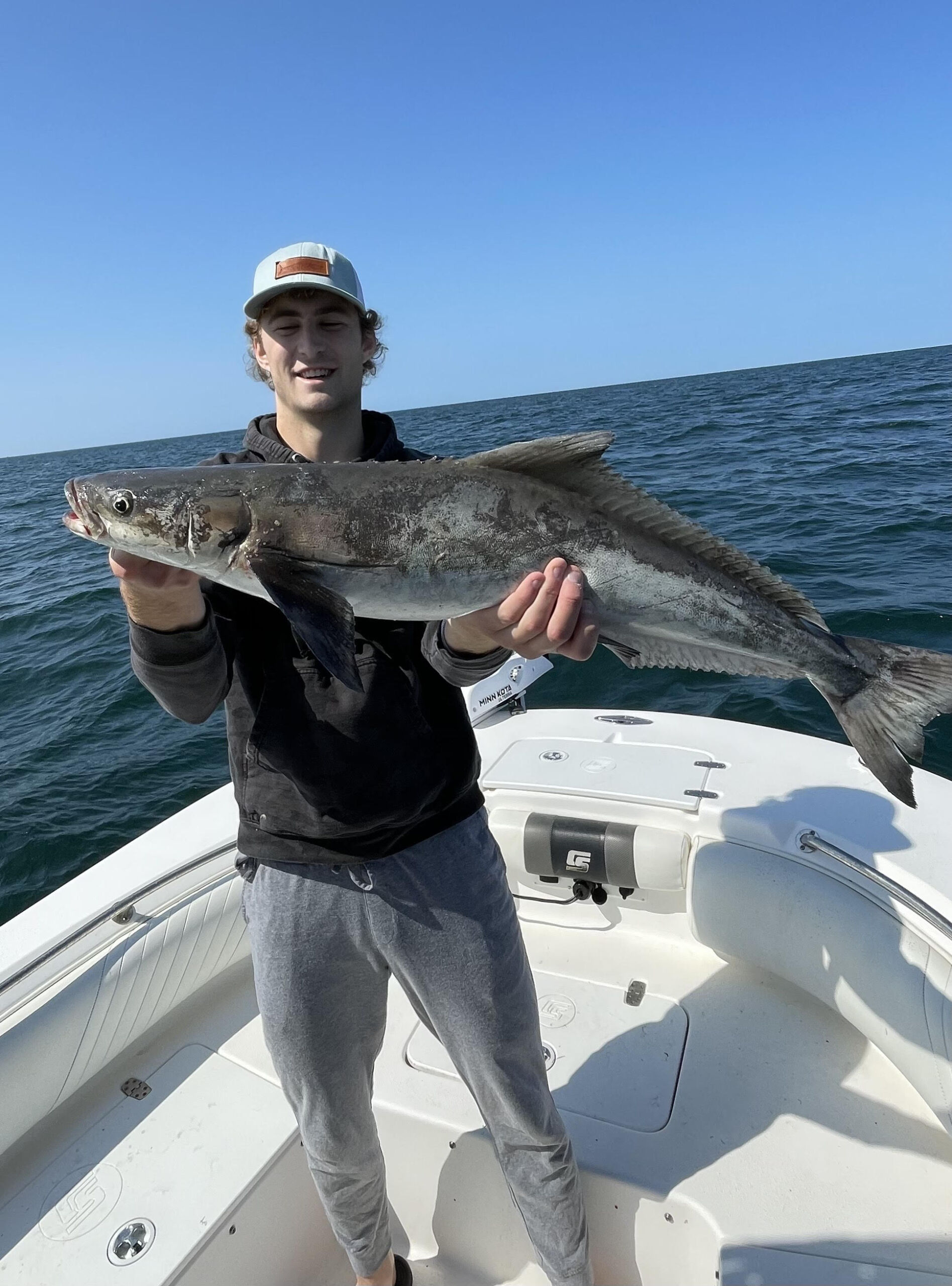
Pierce Latta
16 years fishing experience
“While trout fishing is not my preferred type of fishing, it offers a good change of scenery from the usual saltwater action. I love how this article starts with the importance of understanding trout. This is an essential skill in any kind of fishing. You have to be able to get into the head of the fish in order to be able to fish for them better. This is honestly one of the biggest differentiating factors between good anglers and great anglers.
The article continues with the importance of location and habitat, even differentiating between species, which is super helpful. This gives us more inexperienced trout anglers a better idea of where to target trout, given the species.
Additionally, this goes even further as the article speaks to the issue of behavioral differences between trout species. Knowing these differences can help us to better target the species we want to catch.
Me personally, I’m a big fan of fishing for brown trout. This being said I would want to focus my efforts on fishing in low-light conditions. Additionally, I would not generally expect to find groups of brown trout huddled up together.
Information such as these facts which are presented in the article, are important and worth paying attention to. By learning more about the species we are targeting by reading, we are able to better target them in real life.
The article then moves on to a section talking about the gear required to catch trout. I love how open and honest this part of the article is. You don’t need a super nice tackle and expensive gear to catch fish. Most of the time, you really just need experience and time on the water—something money simply cannot buy.
Remember this when you are contemplating buying your next setup. You don’t always need the nicest setup to land the fish. Remember, like I always say, a lot of fishing is simply a matter of preference. If you are comfortable spending a little more money on a setup, then by all means, do so, but if not, that’s also okay.
The next section of the article I want to talk about is the trout fishing tips for beginners. As a beginner trout fishing angler myself, this very much speaks to me. I love how the article puts this section in simple terms that are easy for the everyday angler to understand.
I specifically loved the point about mixing it up. This is such a huge part of fishing and goes far beyond the scope of just fly fishing. Mixing up strategies applies to every type of fishing because you just never know exactly what the fish are going to want that day.
Additionally, the article continues with more advanced tips for trout anglers, which is nice. I know for a fact that I myself don’t qualify for this category, but it is helpful to have information on all levels of experience amongst trout anglers.
The last thing the article touches on is some common mistakes to avoid. These sections are always some of my favorites, as mistakes are one of the greatest ways to learn and improve your fishing skills.
So, my advice to readers would be to pay attention to these mistakes and learn from them so you don’t have to make these mistakes yourself.
I hope you have enjoyed reading these comments and as always, good luck and tight lines!”
Visit his Instagram profile.
Subscribe to his YouTube channel.
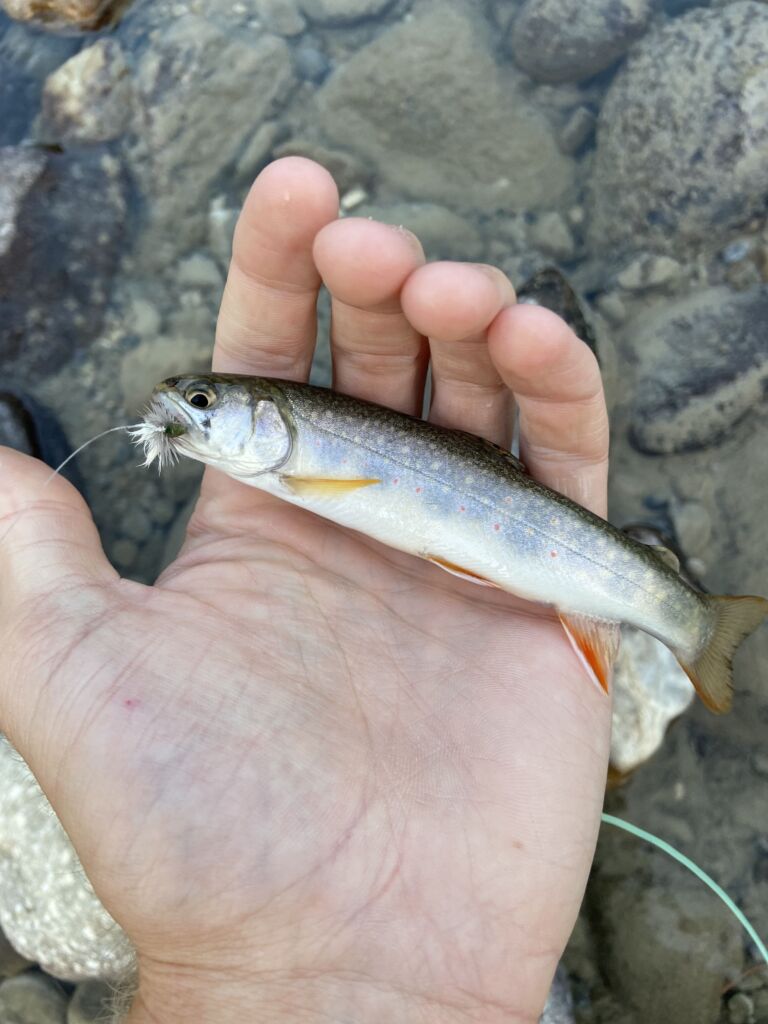
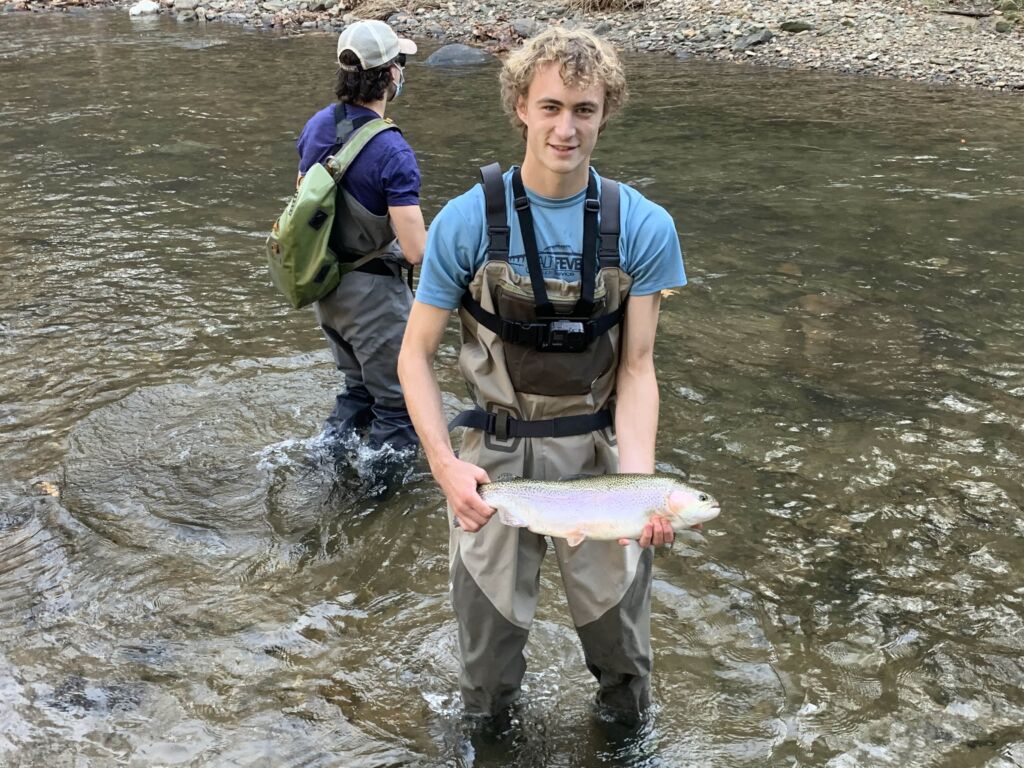
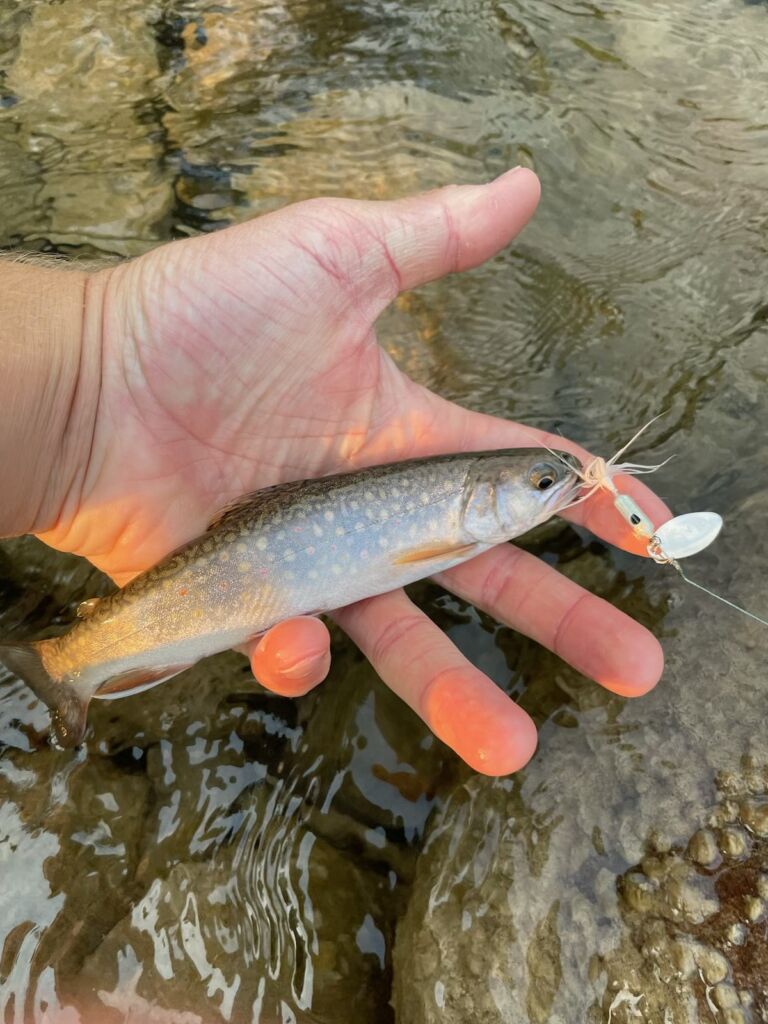
Understanding Trout
If you understand how different Trout behave, you’ll have a much better idea about not only how to catch them but also where and when to catch them and what to catch them on, which will significantly increase your chances of landing a big fish or taking a feed of fish home for your family.
The number of Trout species in a specific river or lake may change dramatically throughout the year depending on the temperature, season, and stocking numbers, how you plan on fishing it, and what species you plan on targeting will need to change.
You might fancy a relaxing day using bait to target stocked Rainbow Trout one day, or if you’re looking for a little more action, switch it up to a barbless fly and tackle some wild Brown Trout.
The Effect of Location and Habitat
Location is a significant factor you need to consider when fishing for Trout. The same lake or river will yield very different results depending on where and how you’re fishing in it. In the short run, you may not notice it, but pay attention, and over time, you’ll start to see a pattern developing.
Take Brown Trout, for example. Browns prefer darker areas, with a lot of cover and sharp switches in current. You’ll find them holding amongst cut banks and outside bends, along with deep holes or close to eddies. If it looks hard to cast into, chances are good that a Brown Trout will be lurking in there somewhere.
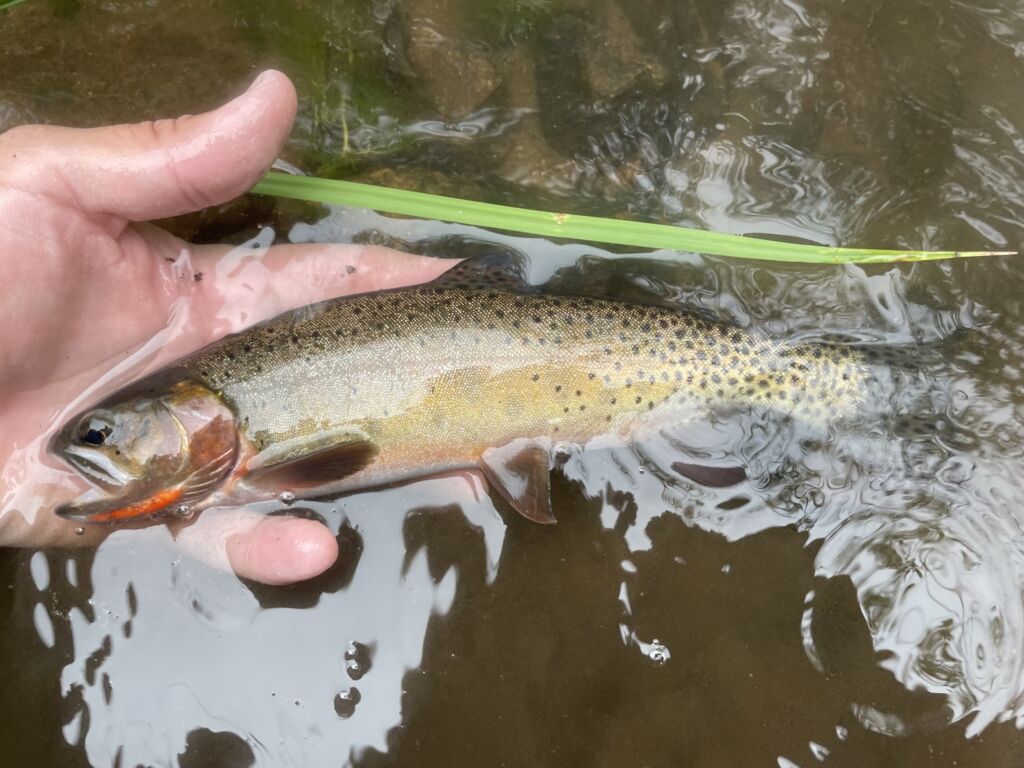
Rainbows can be found out in the current, typically holding behind a snag or rock to preserve their energy and hold position. They like insects and love to hunt either the top surface of water or the very bottom.
Brook Trout are more like Brown Trout in that they tend to hang around isolated cuts in the banks or small pockets. Still, they’re typically very aggressive about hunting anything that’s brave enough to venture into their small world.
Behavioral Differences Between Species
Along with differences in locations, the three main Trout species all behave a little differently than one another. If you can learn to spot the differences and fish to the species, you’ll increase your catch rate for your target species.
Brown Trout prefer hunting and moving around in low-light conditions. Early mornings, late evenings, and even into the night is their preferred time to feed. Bright sunny days with no cloud cover aren’t great for Browns.
Rainbow and Brook Trout, on the other hand, are more ‘insect oriented,’ and you’ll find both of them feeding throughout the day.
Where you might see several Rainbows hunting the same current line, more often than not, Brown Trout prefer to do their own thing. Brooks falls between the two, sometimes hunting alone, and sometimes you may see several of them cruising the same section of the river, taking advantage of a current line or overhang.
And finally, Brown Trout is the most suspicious of all three. If they follow and don’t strike, chances are good they never will. Rainbows, on the other hand, are a little cautious but will watch a lure 2-3 times, even to the point of it leaving the water, and still strike it on the 4th cast. Of the three main species in North America, Brook Trout is the most aggressive. They’ll even go as far as taking multiple attempts at the same lure, striking it repeatedly.
Essential Gear for Trout Fishing
The greatest thing about Trout fishing is that you don’t need to spend a fortune or have all the latest equipment to have a successful day on the water. That’s not to say you can’t, and let’s be honest, there are some very fancy fly-fishing setups out there, but they aren’t mandatory, and at the end of the day, you can catch some trout on a $30 rod and reel or a $300 setup just the same.
If you’re planning on bait fishing for Trout, a medium-weight rod and reel setup that’s about 6-7 feet will be perfect. Throw in some 4-6 lb line, some hooks, floats, and sinkers, and you’re ready to go. Trout aren’t too fussy about what bait they eat, with worms, leeches, nightcrawlers, insects, and minnows being popular choices. If you’re fishing stocked fish, popular artificial baits such as Powerbait can be very effective.
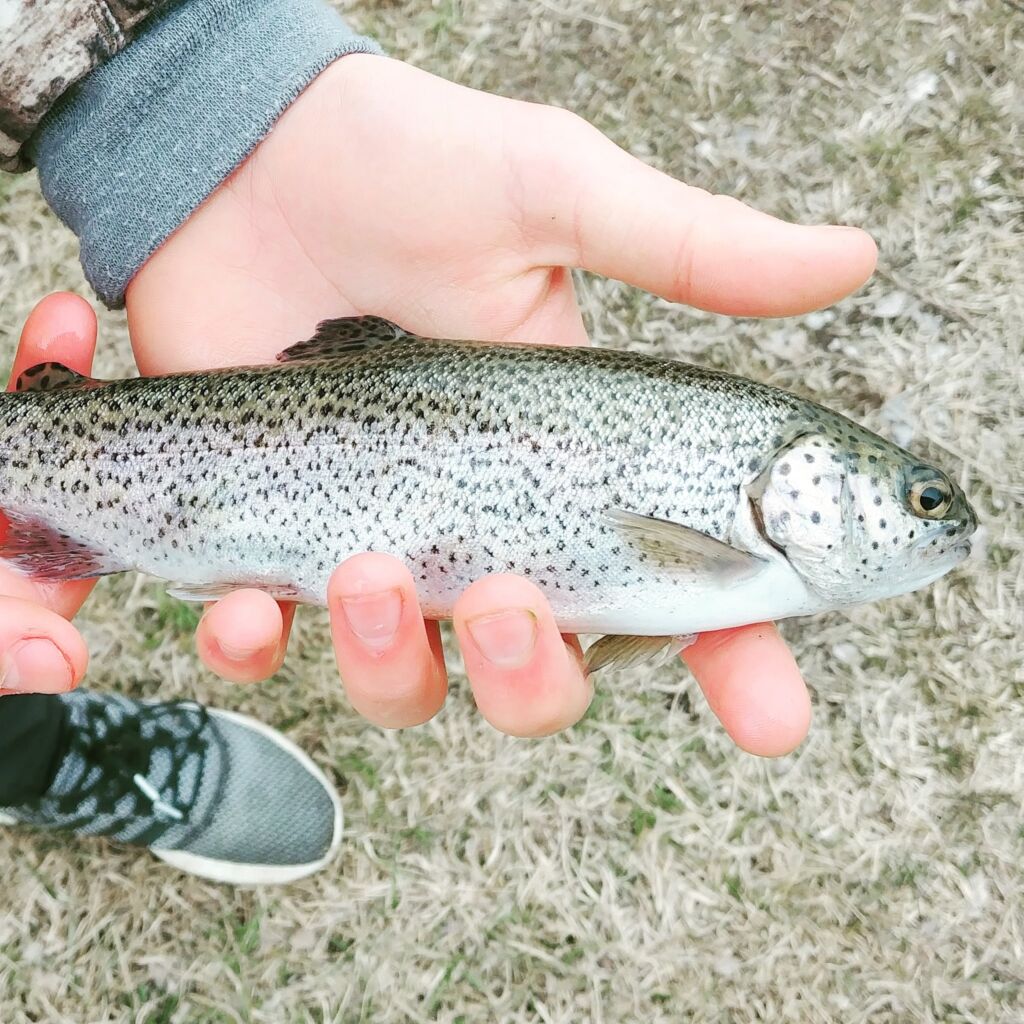
Another option is spinning, which will require more of a specialized casting rod and reel setup and possibly a lighter line in the 4 lb range. You can go with soft plastics, spinners, slices, or spoons. There are a lot of different lure options.
For the experienced angler who’s looking to step it up a level, you have fly fishing. The setup costs will be the highest of the three options, and learning to cast and catch fish on a fly rod and reel is a bit more of a challenge, but it makes it that much more when you finally land one.
Best Techniques for Catching Trout
In the following section, we’re going to be focussing on some proven techniques for catching Trout in both lakes and reservoirs and rivers and streams.
Trout Fishing Techniques in Lakes and Reservoirs
Luckily, when it comes to Trout fishing techniques in lakes and reservoirs, you have a lot of options. Below, we have three of the main techniques that you can adjust to suit the size of the body of water you intend on fishing:
- Floating Suspended Baits – Float your bait, natural or artificial, with a small weight to help it sink under the bobber about 1-3 feet from the surface. Cast out to your desired area and adjust the distance between the bobber and hook depending on the depth of your target area.
- Fishing the Bottom – Trout spend a lot of time on the bottom, so fishing the bottom can be an effective technique. Keep the weight and hook about 1-3 feet apart. You can go with a fixed weight or a sliding weight, depending on your preferences.
- Spinning and Retrieving Lures – Spoons and spinners, along with other lures, are effective at mimicking minnows, insects, and other prey items. Try casting along the shoreline instead of straight out into the lake, and look for breaks in the current, snags, and other structures where Trout may be hiding.
Trout Fishing Techniques in Streams and Rivers
The current in streams and rivers plays a vital role in where you cast and how you retrieve them. Below, we have two of the main techniques that you can adjust to suit the size of the body of water you’re intending to fish:
- Spinning and Retrieving Lures – You’ll need to cast upstream above the target area, as the current will bring your lure down past and through the target area. You’ll need to retrieve your lure slightly faster than the current one, depending on what type of lure you’re using and how much it floats or sinks.
- Floating Baits – When you’re floating baits in rivers, the same rules apply. You’ll need to cast upstream above the target area, allowing the bait to drift down through the desired area.
Best Locations for Trout Fishing
Where you fish for Trout will depend a lot on what access you have and what bodies of water you have access to. One of the most popular pastimes Trout anglers enjoy is fishing in rivers and streams, as you can utilize all fishing techniques, including bait, lures, and fly fishing.
The first step when you arrive at any body of water, before you even start casting your line out, is to take a walk around the area to evaluate potential fishing spots and the best techniques to target these spots. However, don’t rush straight to the edge of the water, making a lot of noise, as you will potentially spook any Trout lurking close to the bank.
Look for structures, artificial or natural, where Trout could potentially be waiting to ambush their prey. Side cuts in banks, bends in rivers, logs, overhanging branches, and deeper pools are all prime Trout locations.
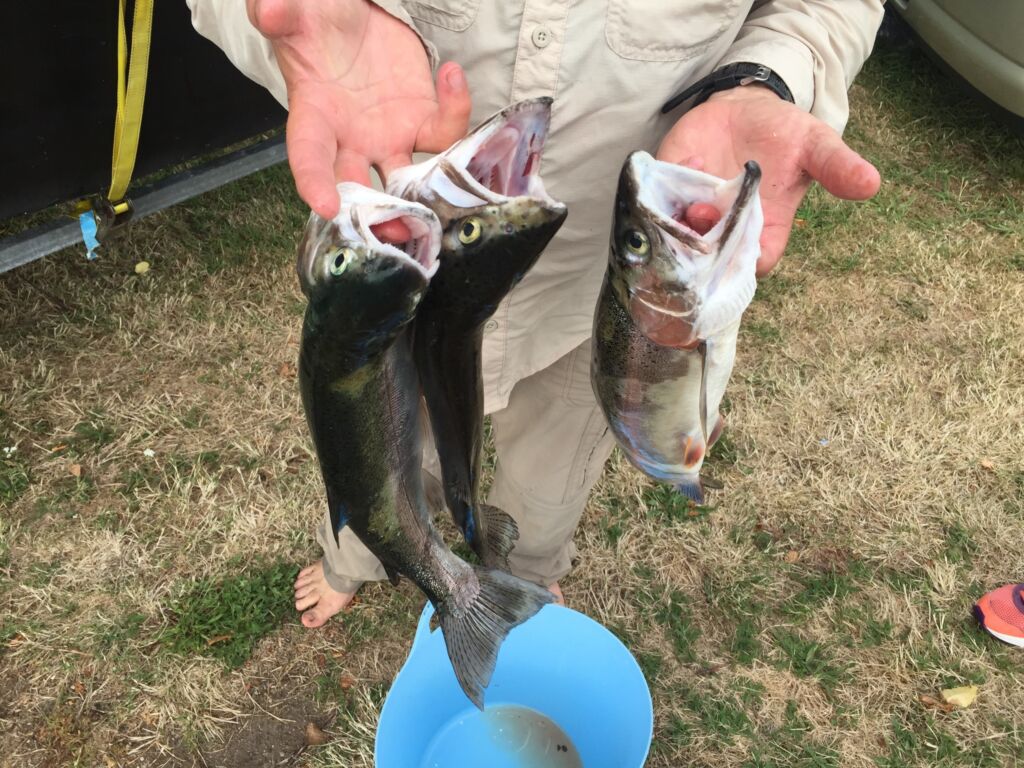
Once you identify a potential spot, choose your targeting method, bait, casting lures or flies, and then get started. Remember, match the hatch. Look at what Trout are feeding on in that area, and match your bait, lures, or flies accordingly. Fish are much more likely to strike something they’re used to seeing.
You don’t need to add a lot of action to your lures when you’re Trout fishing in rivers or streams, as the current combined with the lure’s movement will give it a natural movement.
One of the crucial things about Trout fishing is patience. Not all Trout feed the same way, and as we mentioned above, some species feed more aggressively than others. Don’t feel like you need to sit in one location for hours and hours. If after 10-15 minutes, especially if you’re casting lures or flies, you haven’t had a strike or seen a fish, try shifting position slightly and trying another potential location.
Likewise, if a specific lure, bait, or fly isn’t performing, and you feel like there’s definitely fish in the area, don’t be scared to mix it up a bit.
Read also: The Ultimate Guide to Setting Up Your Trout Fishing Rig: Techniques, Tips, and Tackle
Trout Fishing Tips for Beginners
Below are some of our recommendations for beginners just getting started in the world of Trout fishing. Remember, no one is an expert on their first fishing trip, and it’s going to take a little bit of time and practice to master the art of Trout fishing.
- Read the Water – When you first arrive at your destination, mainly if you haven’t fished there before, take some time to analyze potential fishing locations and also what type of food Trout will most likely be eating in that area.
- Casting Techniques – Practice your casting at home before you arrive at your fishing location. Casting isn’t as important when you’re bait fishing, but it’s crucial when casting lures and flies. Fly fishing, in particular, will take a lot of practice, and if you want to avoid losing equipment, a bucket in the backyard is a great way to practice your accuracy.
- Mix It Up – Don’t be scared to mix things up when you’re Trout fishing if something doesn’t appear to be working. Change baits, lures, or flies. Try new locations. Vary your retrieval speed.
Advanced Trout Fishing Tips
Below are some of our recommendations for more advanced or experienced anglers who have more freshwater angling experience or are just looking to improve their catch rate when targeting Trout:
- Know the Water Temperature – If you want to know more about where the fish will be and how they’ll bite, carry a thermometer and check the water temperature. If the water is above 66°F, fish activity will be slow, and Trout will most likely be lurking close to the bottom where it’s cooler.
- Watch and Wait – Before you bother unpacking and casting your line, do a good reconnaissance of the area you plan on fishing. Look at fish behavior. Are they rising to the surface or staying down deep? What type of food are they eating, and what sort of food is in the area?
- Be Prepared – Evaluate your area, and along with identifying potential fish spots, also look for where you plan on landing them and how. Once you hook up, especially if it’s a big Trout, being prepared will help you remain calm, and if you have a plan already, you’ll fight and land the fish much smoother, reducing the chances of losing your fish.
- Weather Is Crucial – Trout is more active on overcast days or after it has rained. It’s best to avoid sweltering days or days with clear skies and a lot of sunshine. Obviously, we can’t always pick and choose when go fishing. So, if you’re stuck going on a hot or really sunny day, try looking for areas close to the bank that will provide cover or deeper pools where Trout can escape from the heat.
Read also: Do Fish Bite Better in the Rain? Exploring the Impact of Rainy Weather on Fishing
Common Mistakes and How to Avoid Them
Below are some things to avoid when you go Trout fishing.
It’s easy to fall into the trap of doing the same thing over and over again when you’re Trout fishing, but Trout are extremely versatile fish, and they’re not going to be sitting in the same spot, eating the same food over and over again every time you go fishing. In fact, most Trout prefer to hang out by themselves, so if you catch a Trout in one spot, particularly a large Trout, the chances of there being another big trout in the exact same spot are much lower.
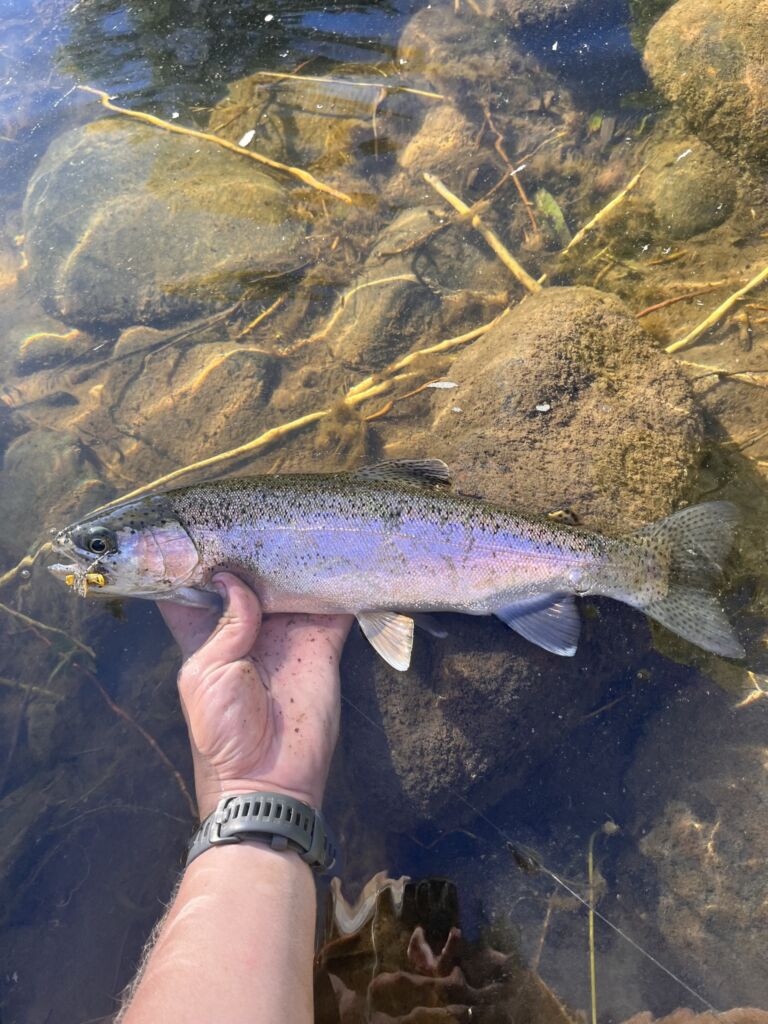
Don’t forget to check local regulations before you go fishing. Trout fishing is heavily regulated in most locations throughout the United States. This includes how you catch them when you catch them, the equipment you’re allowed to use, what species of Trout you can keep, which ones need to be released, and when the fishing season is closed or open. So, before you even leave home for a day of fishing, make sure you have the required license or permits and you’ve thoroughly checked out the local regulations.
How to Catch Trout: Tips and Techniques for Successful Trout Fishing | Conclusion
Trout fishing can be one of the most fun and rewarding freshwater fishing activities, enjoyed by both new and experienced anglers alike. By utilizing the information above, such as understanding Trout behavior, essential fishing equipment, best fishing locations, and much more, you’ll be one step closer to mastering the art of Trout fishing.
One of the great things about catching Trout is that once you get good at one method, you can switch it up and make it more challenging for yourself.
An integral part of being a good angler is being a responsible angler. What does that mean? It means buying the appropriate licenses or permits, following bag, size, and catch limits, taking only the fish you need, and leaving the fishing area as clean if not cleaner than you found it when you arrived. By being responsible anglers, we’re all doing our part to ensure that future generations of new anglers will be able to experience the same joy and excitement from catching a fish for the first time as we did.
It doesn’t matter if this is your first Trout fishing trip or you’ve been hitting the streams and rivers for years, the premium fish forecasting application Fishbox App, will put you in the perfect position to potentially land some great Trout. Fishbox App analyzes weather and water conditions and input from local anglers to give you accurate and up-to-date weather and fishing forecasts which lets you know when the fish are biting.
Get your personalized fishing map
Answer a quick quiz and get your own personalized fishing map
Have you got a favorite bait, rig, or technique you regularly use when going Trout fishing that we haven’t talked about enough? Drop a comment below! We’d love to hear your feedback. Your Trout fishing tips could help a new angler land their first Trout and change their world forever.
